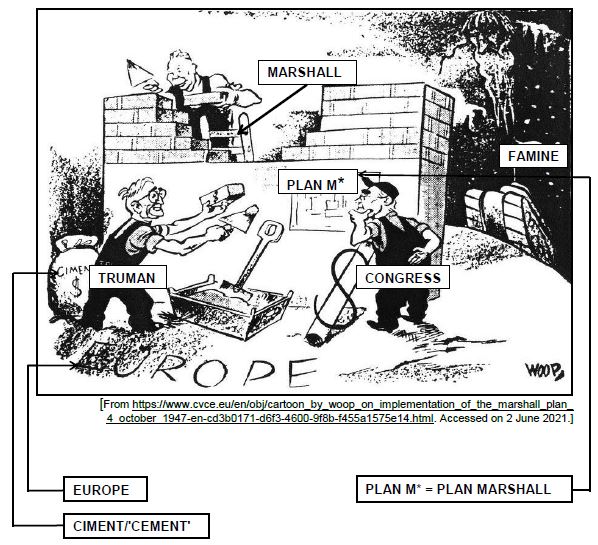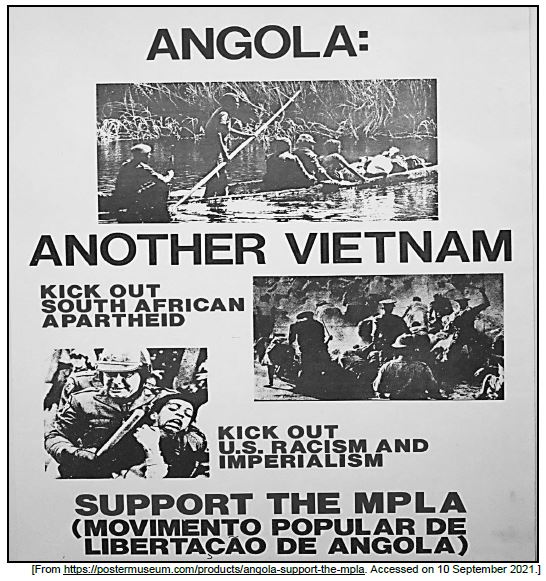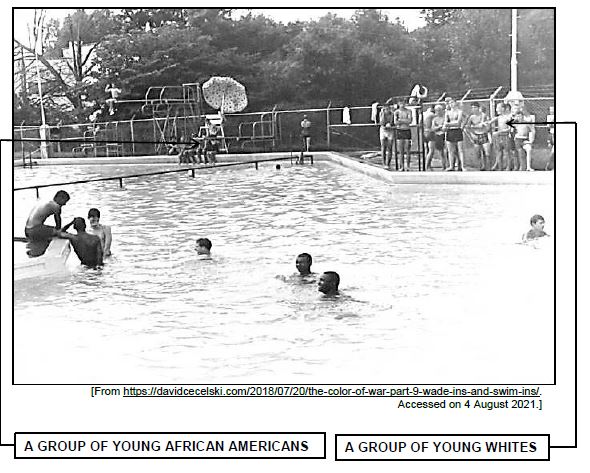HISTORY PAPER 1 GRADE 12 ADDENDUM - NSC PAST PAPERS AND MEMOS NOVEMBER 2021
Share via Whatsapp Join our WhatsApp Group Join our Telegram GroupQUESTION 1: HOW DID THE MARSHALL PLAN INTENSIFY COLD WAR TENSIONS BETWEEN THE UNITED STATES OF AMERICA (USA) AND THE SOVIET UNION (USSR) FROM 1947?
SOURCE 1A
The source below highlights the devastation and destruction that the Second World War had on the European economy and the need for its reconstruction.
Post-war Europe was in dire straits (a terrible state). Millions of its citizens had been killed or seriously wounded in the Second World War. Many cities, including some of the leading industrial and cultural centres of Great Britain, France, Germany, Italy and Belgium had been destroyed. Reports provided to Marshall (Secretary of State) suggested that some regions of the continent were on the brink of famine (starvation) because agricultural and other food production had been disrupted by the fighting. In addition, the region's transportation infrastructure – railways, roads, bridges and ports – had suffered extensive damage during airstrikes and the shipping fleets of many countries had been sunk. In fact, it could easily be argued that the only world power not structurally affected by the conflict had been the United States. The reconstruction coordinated under the Marshall Plan was formulated following a meeting of the participating European states in the latter half of 1947. Notably, invitations were extended to the Soviet Union and its satellite states. However, they refused to join the effort … [From https://www.history.com/topics/world-war-ii/marshall-plan-1. |
SOURCE 1B
The source below is part of a speech that George Marshall, the Secretary of State of the United States of America (USA), delivered at Harvard University on 5 June 1947. It focuses on the USA's intention to provide financial (economic) aid to European countries.
It is logical that the United States should do whatever it is able to do to assist in the return of normal economic health in the world, without which there can be no political stability and no assured peace. Our policy is directed not against any country or doctrine, but against hunger, poverty, desperation and chaos. Its purpose should be the revival of a working economy in the world so as to permit the emergence of political and social conditions in which free institutions can exist. Such assistance, I am convinced, must not be on a piecemeal (separated) basis as various crises develop. Any assistance that this government may render in the future should provide a cure rather than a mere palliative (be comforting). Any government that is willing to assist in the task of recovery will find full co-operation I am sure, on the part of the United States government. Any government which manoeuvres (tries) to block the recovery of other countries cannot expect help from us. Furthermore, governments, political parties or groups which seek to perpetuate (spread) human misery in order to profit therefrom politically or otherwise will encounter the opposition of the United States. It is already evident that, before the United States government can proceed much further in its efforts to alleviate (improve) the situation and help start the European world on its way to recovery, there must be some agreement among the countries of Europe as to the requirements of the situation and the part those countries themselves will take in order to give proper effect to whatever action might be undertaken by this government. … [From Book of Great Speeches by A Burnet] |
SOURCE 1C
The source below focuses on the reasons forwarded by the Soviet Union's Foreign Minister, VM Molotov, for the rejection of the Marshall Plan at a meeting held in Paris on 2 July 1947.
Soviet Foreign Minister, VM Molotov, walks out of a meeting with representatives of the British and French governments, signalling the Soviet Union's rejection of the Marshall Plan. Molotov's action indicated that Cold War frictions (conflicts) between the United States and Russia were intensifying. The Soviet reaction to Marshall's speech was a stony (hostile) silence. However, Foreign Minister Molotov agreed to a meeting on 27 June 1947 with his British and French counterparts to discuss the European reaction to the American offer. Molotov immediately made clear the Soviet objections to the Marshall Plan. First, it would include economic assistance to Germany, and the Russians could not tolerate such aid to the enemy that had so recently devastated the Soviet Union. Second, Molotov was adamant (stubborn) in demanding that the Soviet Union have complete control and freedom of action over any Marshall Plan funds Germany might receive. Finally, the Foreign Minister wanted to know precisely how much money the United States would give to each nation. When it became clear that the French and British representatives did not share his objections, Molotov stormed (walked) out of the meeting on 2 July 1947. From the Soviet perspective, its refusal to participate in the Marshall Plan indicated its desire to remain free from American economic imperialism and domination. In the following weeks, the Soviet Union pressured (forced) its Eastern European allies to reject all Marshall Plan assistance. That pressure was successful and none of the Soviet satellites (colonies) participated in the Marshall Plan. The Soviet press claimed that the American programme was a 'plan for interference in the domestic affairs of other countries'. The United States ignored the Soviet action and, in 1948, officially established the Marshall Plan and began providing funds to other European nations. [From https://www.history.com/this-day-in-history/soviet-union-rejects-marshall-plan-assistance. Accessed on 2 June 2021.] |
SOURCE 1D
The cartoon below was drawn by a German, William Wolfe, also known as Woop, on 4 October 1947. It depicts the efforts taken by President Truman of the United States of America and the Congress to implement the Marshall Plan in Europe from 1947.
[From https://www.cvce.eu/en/obj/cartoon_by_woop_on_implementation_of_the_marshall_plan_ 4_october_1947-en-cd3b0171-d6f3-4600-9f8b-f455a1575e14.html. Accessed on 2 June 2021.]
QUESTION 2:
WHY DID FOREIGN POWERS BECOME INVOLVED IN THE ANGOLAN CIVIL WAR BETWEEN 1974 AND 1976?
SOURCE 2A
The source below outlines the impact of the developments in Portugal that led to the independence of Angola in 1975 and the subsequent contestation (challenge) for power by the three Angolan liberation movements (MPLA, FNLA and UNITA).
In April 1974, junior officers belonging to the Movement of the Armed Forces (MFA) toppled the Salazar-Caetano regime in Portugal and began the process of decolonisation. In 1974, however, a frenzy (rage) of diplomatic and political activity at home (Angola) and abroad mitigated (helped) against a negotiated independence. In 1975, as the will to retain imperial control over Angola dwindled (declined), fighting broke out in many provinces of Angola and also in the capital, Luanda, where the armies of the Popular Movement for the Liberation of Angola (MPLA), the National Front for the Liberation of Angola (FNLA) and National Union for the Total Independence of Angola (UNITA) were intended to maintain the peace with joint patrols. In January 1975, under heavy international pressure, the colonial power and the three movements had signed an agreement in Alvor, Portugal, providing for a transitional (temporary) government, a constitution, elections and independence. This Alvor Accord soon collapsed, however, and the transitional government scarcely (hardly) functioned. In the subsequent confrontations the FNLA received military support from Zaire with the backing of China and the US, while under Agostinho Neto the MPLA gained ground, in particular in Luanda, with support from the Soviet Union and from Cuban troops. On 11 November 1975 Angola became independent. The FNLA and UNITA were excluded from the city and from government and a socialist one-party regime was established which eventually gained international recognition, though not from the United States. [From https://rc-services-assets.s3.eu-west-1.amazonaws.com/s3fs-public/From_military_peace_to_social _justice_The_Angolan_peace_process_Accord_Issue_15.pdf. Accessed on 6 June 2021.] |
SOURCE 2B
The extract below focuses on why the United States of America (USA) became involved in the Angolan Civil War in 1975.
The Soviet Union and Cuba doubled down (increased) on their defence of the MPLA government. The Soviets amped (increased) up their economic aid, while the Cubans initially committed about 15 000 ground troops to the region, a number that rose to nearly 36 000 within the year. The United States' intervention in Angola was heavily shaped by several factors. First, much like in Vietnam, American leaders, such as Secretary of State Henry Kissinger, believed that a communist takeover in Angola would lead to a domino effect in the rest of southern Africa. If Angola fell, it was feared that the Soviets, Cuba, and to a lesser extent China, would feel bold enough to inspire revolution that was Pan-African and communist in nature, rather than nation-based and capitalist-oriented, throughout the African continent. Second, offshore of the northern half of the country lay enormous oil fields. Neither the United States nor the Soviet Union wanted such reserves to fall into the other's hands. Angolan oil could potentially benefit both nations economically and could also help cut costs of military operations in the continent should they arise in the future. Third, the CIA feared that the Soviet Union was attempting to establish a military base in Angola. Such a concern was based on historical evidence. The Soviets had backed a 1977 coup led by former Interior Minister of Angola, Nito Alves. Although Alves was eventually executed by Neto following the Nitista (a name given to the followers of Alves) coup, American officials knew that the Angolan Civil War served as a real threat to its interests throughout all of Africa. [From https://www.atomicheritage.org/history/proxy-wars-during-cold-war-africa. |
SOURCE 2C
The source below explains South Africa's foreign policy proposal to FNLA and UNITA to ensure regional stability.
From the outset, the question of coming to an arrangement with the MPLA was a non-starter. The public remained acutely sensitive to any suggestion of the spread of communist influence – broadly defined – in any part of Africa or the Indian Ocean. Pretoria therefore launched a series of exploratory overtures (proposals) to the FNLA and UNITA to see whether an Angola ruled by either would provide the regional stability and security that South Africa desired. From February 1975, SADF military intelligence and the Bureau of State Security (BOSS) officials began meeting regularly with the upper echelons (ranks) of both organisations in Angola and Europe. Both the FNLA and UNITA were desperate for help and said what South Africa wanted to hear: namely that an Angola under their control would form part of an anti-communist bloc in southern Africa, built on the three pillars of economic interdependence, good neighbourliness, and non-interference in each other's affairs. [From Reassessing South Africa's intervention in the Angolan Civil War, 1975–1976, Journal of Cold War Studies. Summer 2013, Vol. 15, Issue 3 by J Miller] |
SOURCE 2D
The source below is a poster titled 'ANGOLA: ANOTHER VIETNAM'. It calls for the withdrawal of South Africa and the US from the Angolan conflict.
[From https://postermuseum.com/products/angola-support-the-mpla. Accessed on 10 September 2021.]
QUESTION 3: HOW DID DIFFERENT FORMS OF SIT-INS CONTRIBUTE TO DESEGREGATION OF PUBLIC FACILITIES IN THE UNITED STATES OF AMERICA (USA) DURING THE 1960s?
SOURCE 3A
The source below focuses on the reasons why young African American students decided to embark on a sit-in at a Woolworths store in Greensboro, North Carolina, in 1960.
It was college students who had relit (revived) the torch, with a seemingly new form of non-violent confrontation (challenge) – the sit-in. … On 1 February 1960, four male students (Ezell Blair Jr, Franklin McCain, Joseph McNeil and David Richmond) from the North Carolina Agricultural and Technical College (A&T) walked into the downtown Woolworths in Greensboro and sat down on stools at the store's lunch counter. When the waitresses wouldn't serve them, the students refused to move. Two of them were members of the Greensboro National Association for the Advancement of Colored People (NAACP) youth group, which, impatient with the glacial (slow) pace of school desegregation and the lack of momentum after the Montgomery boycott, had been agitating (pushing) to get things moving again. The Youth Council had been founded seventeen years before, after a visit to Greensboro by NAACP official Ella Baker. After being refused service at Woolworths, the four returned the next day, and this time they brought with them more than twenty fellow students. The day after that, sixty-six students from Agricultural and Technical (A&T) and other colleges and universities throughout the area showed up. By the end of the week, more than a thousand young people were involved in the sit-in, shocking not only the residents of Greensboro but the rest of the South and the nation. Soon, students in nearby Winston-Salem and Durham launched their own demonstrations. Hundreds of students staged sit-ins in downtown Nashville. Protest erupted in South Carolina, Florida and Virginia, igniting (awakening) each other like a string of firecrackers. By April, more than fifty thousand people throughout the South had taken part in sit-ins in seventy-eight cities and towns, and more than two thousand demonstrators were arrested. [From Freedom's Daughters by L Olson] |
SOURCE 3B
The source below is part of an interview that was held between Joseph Jackson Jr (leader of the Tougaloo Nine) and writer Gabriel San Román of the Orange County Weekly in California, in 2015. It focuses on the interaction between nine students from Tougaloo College and the librarians at the 'whites only' Jackson Public Library in Mississippi on 27 March 1961, regarding their 'sit-in' ('read-in') in the library.
Joseph Jackson Jr, their leader, approached the circulation desk. With heart thumping, he stammered a message he had memorised: 'Ma'am, I want to know if you have this philosophy book. I need it for a research project.' 'You know you don't belong here!' the library assistant yelled, proceeding to call the library director. 'May I help you?' the latter (library director) asked, coming out of her office. 'We're doing research,' the students responded. 'There's a Coloured library on Mill Street,' she said. 'You are welcome there.' Almost immediately, Jackson later reported, police entered the building and told the students to get out of the library. No one moved. The chief of police then told them that they were under arrest. Six officers placed the students into squad cars and at the station charged them with breach (breaking) of the peace because they failed to leave the library when ordered. They were booked into the local jail. Several days later, the students were taken to the courthouse to be tried. Several blocks away, hundreds of whites were marching through city streets under a huge Confederate flag. At the courthouse, however, some 100 black supporters had gathered to cheer what were now referred to as the 'Tougaloo Nine'. [From The Orange County Weekly in California by GS Román] |
SOURCE 3C
The photograph below depicts young African Americans and whites in a 'swim-in' (to protest against segregation in swimming pools) at Pullen Park's swimming pool in Raleigh, North Carolina on 7 August 1962. In the background of the photograph are two groups, African Americans sitting and whites standing separately.
[From https://davidcecelski.com/2018/07/20/the-color-of-war-part-9-wade-ins-and-swim-ins/.
Accessed on 4 August 2021.]
SOURCE 3D
The source below elaborates on how non-violent sit-in protests contributed to the desegregating of facilities in the United States of America in the 1960s.
Six months after the sit-ins began, Harris, the manager of the Greensboro Woolworth's, finally relented (gave in): The sit-ins had already cost him $150 000 in lost business. On 25 July 1960, the lunch counter served its first black customers – four Woolworths' employees who worked in the store's kitchen. In some cities, police used tear gas or fire hoses on demonstrators. In Jacksonville, Florida, whites beat sit-in participants with axe handles and baseball bats. But, by the end of the year, integration of lunch counters had occurred in many cities across the South. The civil rights protests didn't end with a cup of coffee at Woolworths … On 11 June 1963, President John F Kennedy, in a live television address from the Oval Office, called for legislation that would give 'all Americans the right to be served in facilities which are open to the public – hotels, restaurants, theatres, retail stores and similar establishments'. Sit-ins and marches, along with Kennedy's assassination in 1963, helped galvanise (start) support for the Civil Rights Act of 1964, which outlawed racial segregation in public facilities and employment. It was signed into law by Kennedy's successor, President Lyndon B Johnson, in July 1964. Today, there is no longer a Woolworths store in downtown Greensboro – the company closed the last of its United States stores in 1997. But on 1 February 2010, the 50th anniversary of the sit-ins, the building that once housed the Greensboro store will reopen as the International Civil Rights Center & Museum. McCain (one of the four male students), who plans to attend the opening, says he'll never forget how he felt on 1 February 1960, at age 17. 'I've never had a feeling like that in my life, just sitting on a stool,' he says. 'It was the most relieving and the most cleansing feeling that I ever felt – the kind of feeling that I'll never have in my life again.' [From The Greensboro Sit-Ins by S Bilyeu] |
ACKNOWLEDGEMENTS
Visual sources and other historical evidence were taken from the following:
Bilyeu, S. 2003. The Greensboro Sit-Ins (New York)
Burnet, A. 2006. Book of Great Speeches (Chambers Harrap Publishers Ltd)
https://davidcecelski.com/2018/07/20/the-color-of-war-part-9-wade-ins-and-swim-ins/
https://postermuseum.com/products/angola-support-the-mpla
https://www.atomicheritage.org/history/proxy-wars-during-cold-war-africa
https://www.cvce.eu/en/obj/cartoon_by_woop_on_implementation_of_the_marshall_ plan4october_1947-en-cd3b0171-d6f3-4600-9f8b-f455a1575e14.html
https://www.history.com/this-day-in-history/soviet-union-rejects-marshall-plan-assistance
https://www.history.com/topics/world-war-ii/marshall-plan-1
Miller, J. Reassessing South Africa's intervention in the Angolan Civil War, 1975–1976, Journal of Cold War Studies, Summer 2013, Vol. 15, Issue 3. University of Pittsburgh
Olson, L. 2001. Freedom's Daughters Scribner (New York)
Román, GS. 2002. The Orange County Weekly in California


